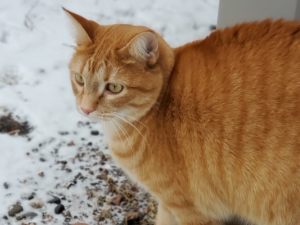By: Talin Seta Shahinian
The purpose of trapping a cat colony is to Trap-Neuter-Return (TNR.) TNR is the process of trapping feral cats, taking them to be spayed or neutered, then returning them to the communities where they’ve been living. This helps to cut down on the number of feral cats having more litters of kittens. If you’re new to TNR, trapping one feral cat may seem like enough of a challenge, so the prospect of trapping an entire colony of feral cats may seem daunting, but it’s doable. It’s also helpful to bring friends or family along on trapping day.
Trapping an entire colony all at once does the most good for community cats. This is referred to as targeted trapping, which means you’ll be focusing on multiple cats that tend to stay in one general area or a specific colony that you’ve identified. There’s a process you should follow when trapping multiple cats in a colony. Following the steps below will make it more likely that your mission will be a success.
Preparing For Trapping Day
First of all, familiarize yourself with trapping equipment and how the different trap types work. Next, you’ll need to buy or borrow humane cat traps. Reach out to your local cat rescue group, as they often have loaner traps for TNR. It’s a good idea to get connected with a local cat rescue organization whether you need traps or not. They can provide you with a wealth of information on TNR, referrals to TNR-friendly vets in your area, and other tips of the trade.
It’s Trapping Day!

Once you have your traps and supplies assembled, you’re ready to go to the trapping area. This could be a colony of cats you feed at a local shopping center, near an apartment building, or barn cats on a farm. Place the traps on a level surface at the perimeter of the trapping area, as cats will be less likely to go into a trap that’s in the middle of a parking lot or any exposed area. It’s also helpful to partially cover the trap with a towel, blanket, or some branches and leaves, so it blends into the environment.
You should line the trap floor with newspaper to hide the trap plate, as some cats are wise to the mechanisms of traps and will avoid going in if they spot them. To make the cats more likely to go into the traps, withhold food for 24 hours before trapping. Make sure you continue to provide water beforehand.
Place a small amount of smelly food, such as oily tuna, toward the back of the trap, so they’ll have to go inside to get it. When they do, the trap mechanism will spring, the door will close, and they’ll be safely trapped within. They won’t be happy to be trapped, so cover the entire trap with a towel or blanket, which can help calm them down a bit.
Transporting The Trapped Colony
After successfully trapping the cats, you’ll need to transport them to the vet for their spay and neuter surgeries. Line the backseat of your car, or the hatch area of an SUV, with a plastic shower curtain, plastic table cloth, or tarp, and put down disposable puppy training pads on top of your plastic protector. The cats will likely be scared and may have bathroom accidents, so you’ll want to protect your vehicle. Note: never put cats inside traps in an enclosed trunk!
Surgery and Post-Surgery Recovery Preparation
Once at the vet, the surgeries will be performed. When the surgeries are over, you’ll need to transport them to a holding area while they recover. The recovery area can be a room in your home, a spare bathroom, or a garage. If using a garage, just make sure it’s not too cold or too hot. You’ll want to arrange a similar set up to the transport area in your car. Lay down protective plastic, place puppy training pads on top, then put the traps on top of that area. Check for soiling and change out the pads as needed.
Caring for the Cat Colony During Recovery Time
A trapped cat is usually stressed and afraid and may lunge at your hand or try to escape the trap the minute the door opens. To provide the cats with food and water as they recover, you may need an isolator known as a catacomb or trap divider. You slide it down into the middle of the trap, with the cat safely behind it, and then open the trap door, to put down food and water. Once you have done this, close the trap door, and remove the divider so the cat can access the food and water.
Returning Colony Cats to the Community
Most cats need at least 24 hours to recover after spay/neuter surgery, but in the case of female cats, some may need a full 48 hours before being returned to the original colony site. Always make sure the cats are alert, fully conscious, and clear-eyed before returning to their original location.
If you live in NW Wisconsin, Purple Cat Mobile Vet Clinic is here to help you keep your cat healthy and happy. We’re a high-quality, high-volume, low-cost spay/neuter clinic. We see cats exclusively. Scheduling information is available on our www.purplecatvet.com website. You can also check out our Facebook page for more helpful information on all things feline!
